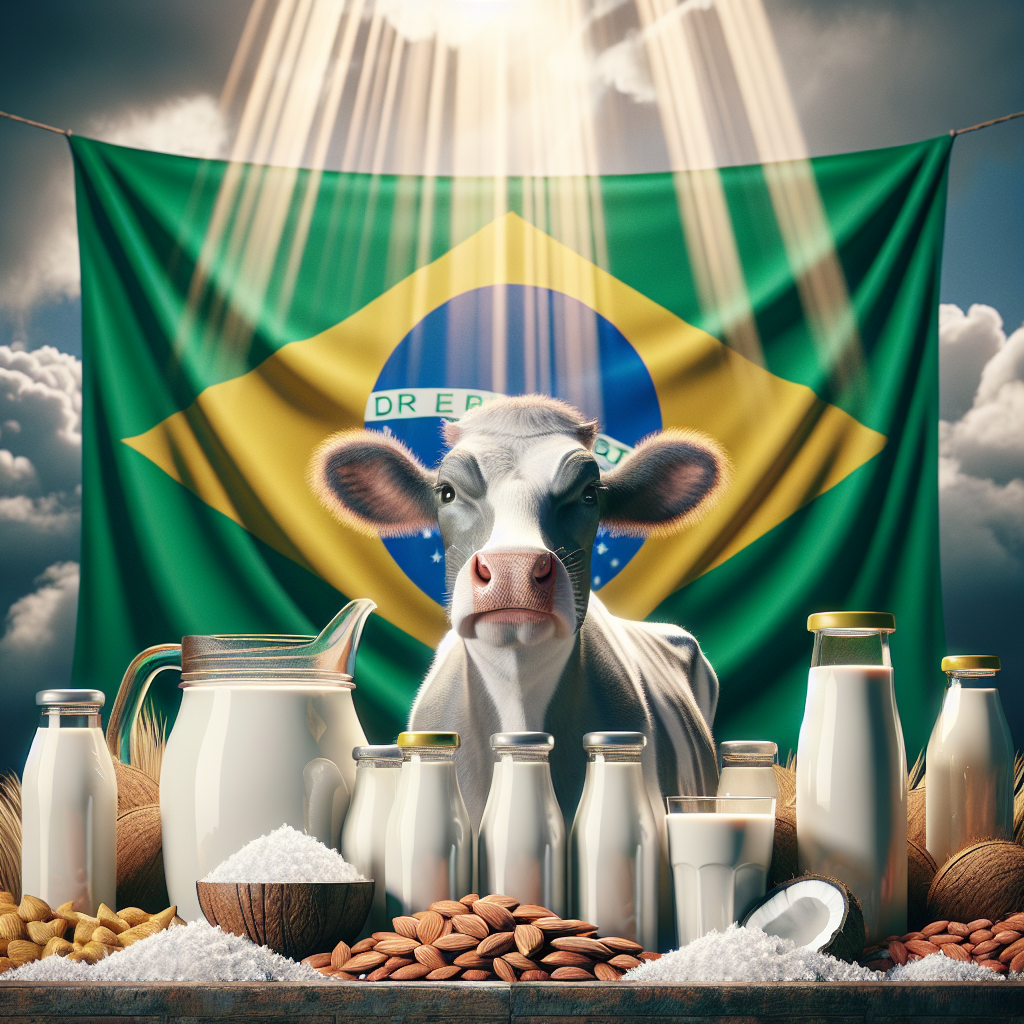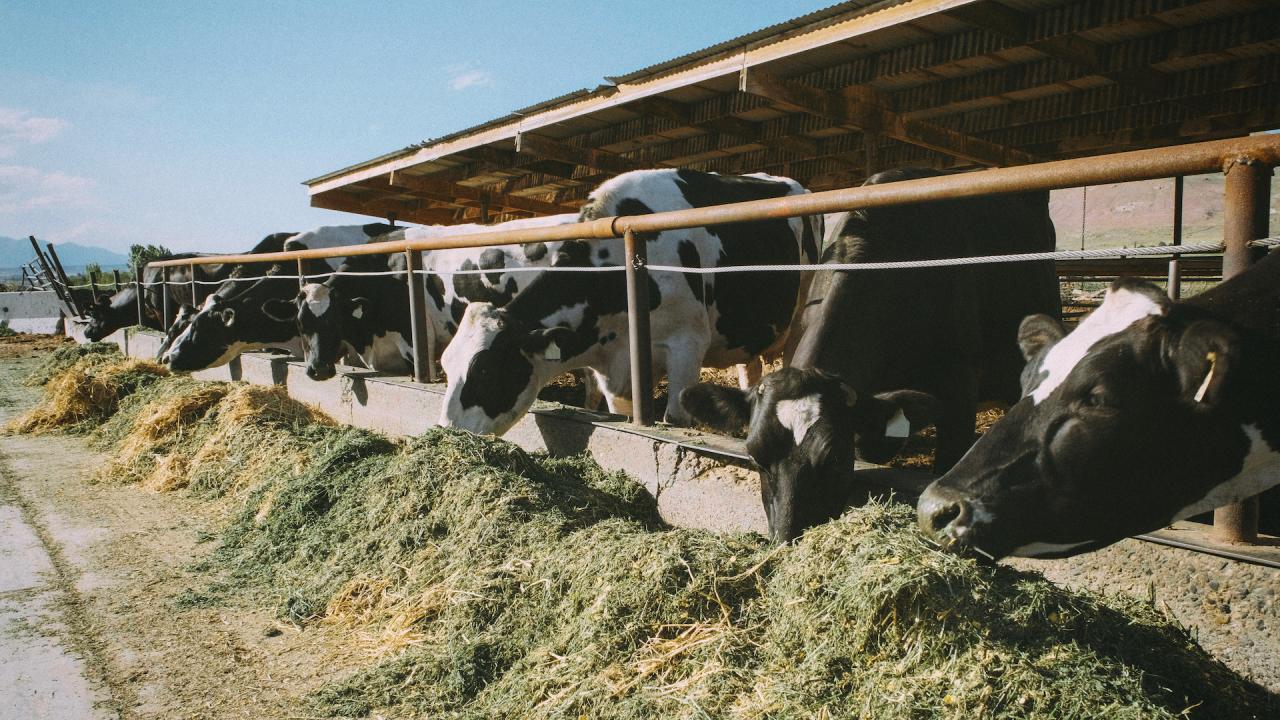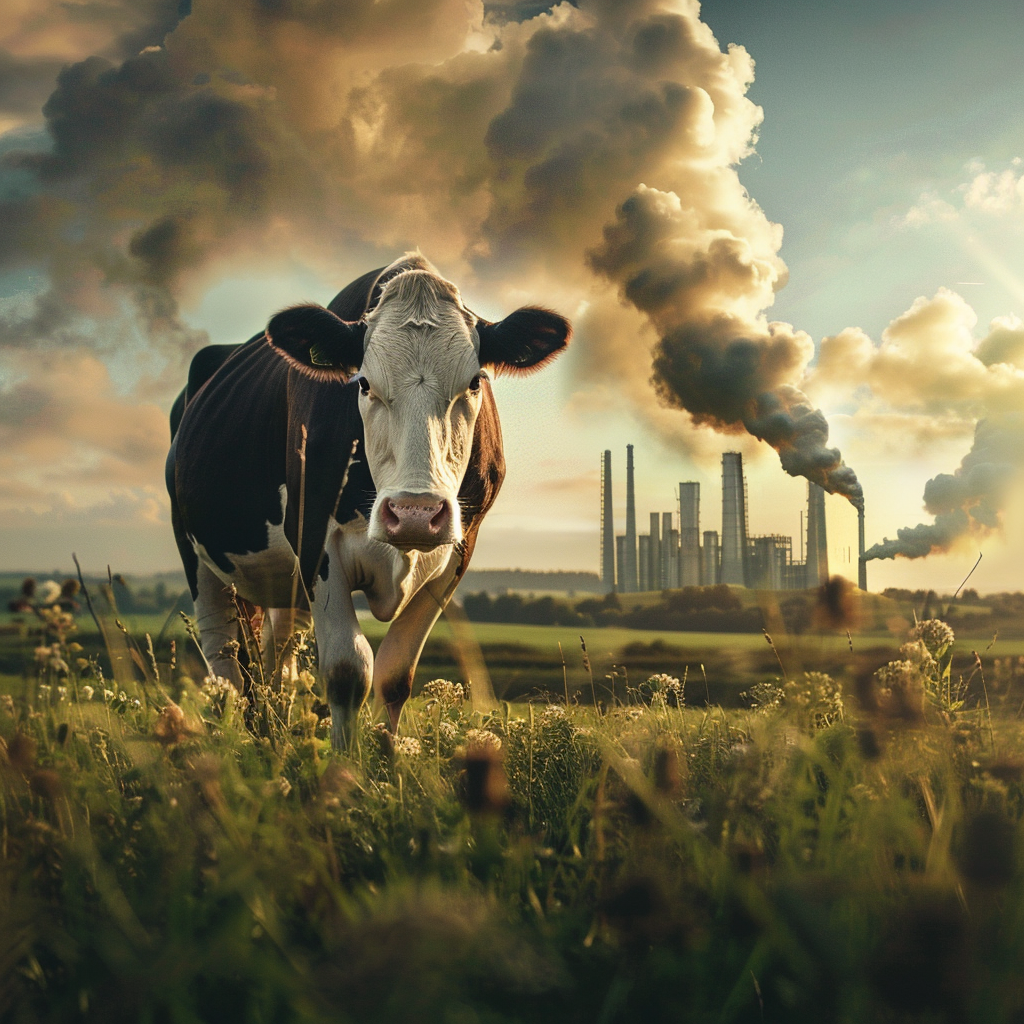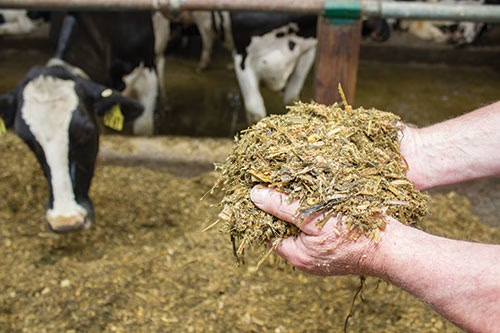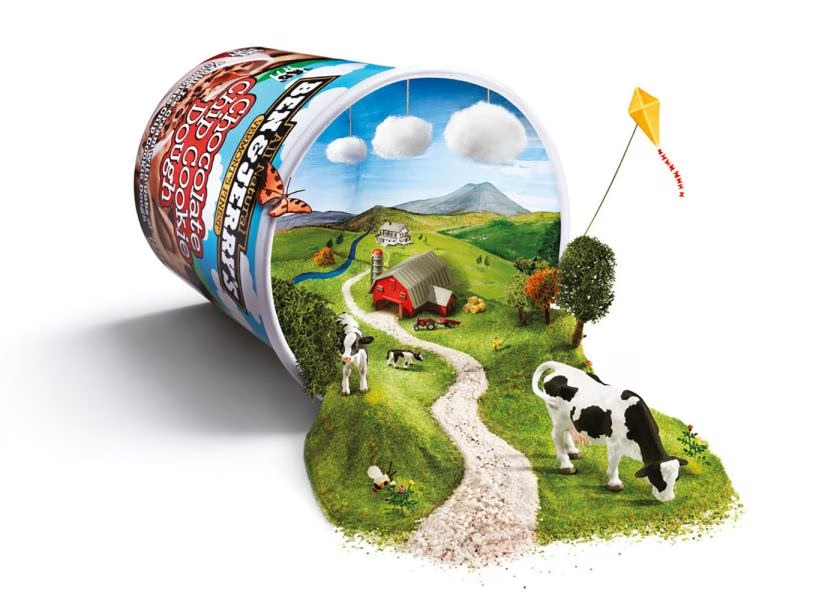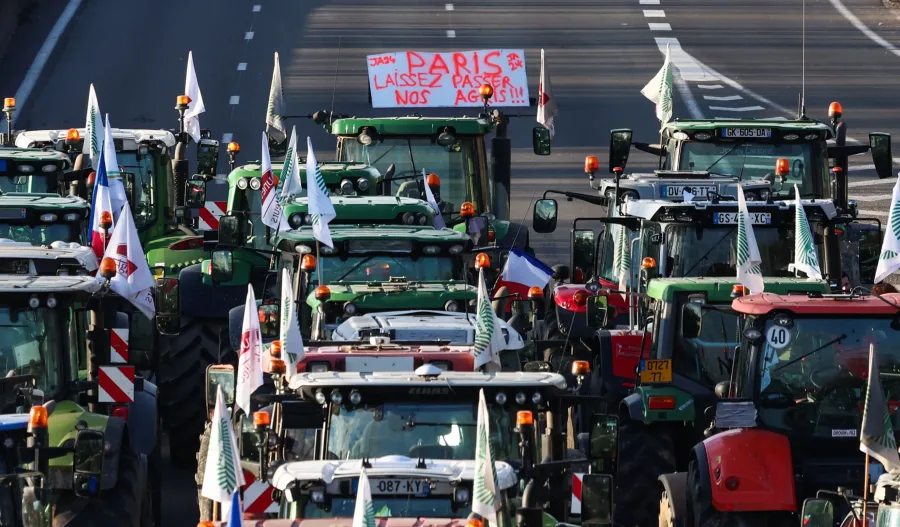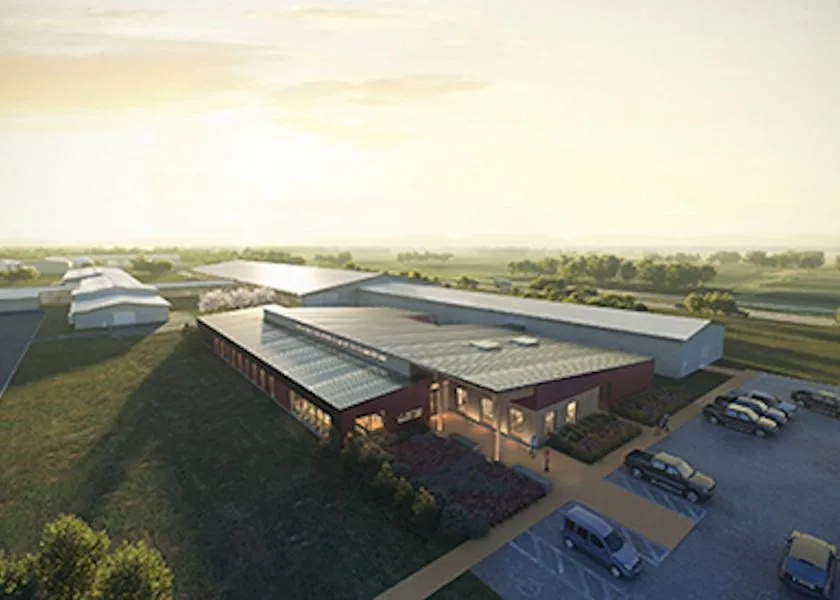Meet Hilda, the IVF calf set to change the dairy industry. Can these new breeding techniques create a greener future?
Summary:
The birth of an IVF calf named Hilda marks a significant step in the dairy industry’s sustainability efforts, particularly under the ambitious ‘Cool Cows’ project aimed at breeding cows with reduced methane emissions. Developed through an expert collaboration led by Scotland’s Rural College (SRUC) and Paragon Veterinary Group and supported by funding from the Digital Dairy Chain, this initiative holds the potential to transform dairy farming practices worldwide. As the first IVF calf of the 16th generation Langhill Herd, Hilda’s birth represents the acceleration of genetic advancements crucial for breeding methane-efficient cattle. Given the dairy industry’s contribution of 4% to global greenhouse gas emissions and the potency of methane, innovations like this are essential for combating climate change. Despite the challenges dairy farmers face adopting sustainable practices, projects like Cool Cows demonstrate a commitment to environmental sustainability and offer hope for a greener future in dairy farming.
Key Takeaways:
- The birth of Hilda, a calf born through IVF as part of the Cool Cows project, marks a significant development towards reducing methane emissions in the dairy industry.
- The Cool Cows project aims to accelerate genetic improvements using IVF and expedite the development of methane-efficient heifers.
- Scientists project this advancement will double the genetic gain rate, increasing the selection and breeding of cows producing less methane.
- The Langhill Herd involved in the study plays a pivotal role in exploring sustainable dairy farming practices.
- Collaborative efforts among SRUC, Paragon, and Semex, with funding support from the Digital Dairy Chain, underline the project’s innovation and teamwork in tackling environmental challenges.
- Overall, the project has gained significant backing, highlighting its potential to advance sustainable farming and mitigate the dairy sector’s environmental impact.
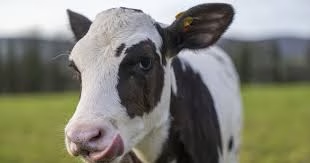
Did you know that the dairy industry accounts for roughly 4% of human-induced greenhouse gas emissions worldwide, primarily due to methane from cows? Methane is over 25 times more impactful than carbon dioxide over a century, so cutting these emissions is vital in battling climate change. As dairy farmers work to shrink their carbon footprints, they face challenges from adopting sustainable practices to investing in green tech. Now, meet Hilda—a calf born through in vitro fertilization in the Cool Cows project. She represents a new herd member and a leap toward reducing the dairy industry’s environmental impact. Hilda’s birth could be a game-changer, showing that cows might be more than milk suppliers; they could be key allies in a sustainable farming future.
Rising to the Challenge: Tackling Methane Emissions in Dairy Farming
The dairy industry is a key part of global farming, but it’s got some big environmental problems to deal with, and we need to act fast. A significant issue is methane emissions, a big concern for climate change. Methane doesn’t hang around as long as carbon dioxide is in the atmosphere, but it’s much more potent for global warming. Cows produce methane when they digest food, a process called enteric fermentation, and how their manure is managed. Since the world’s dairy herd is responsible for a good chunk of this methane, it’s crucial to address it, especially since methane is over 25 times more potent than carbon dioxide in warming the planet over a century.
The dairy industry has recently tackled these environmental challenges with various efforts and innovative solutions. Techniques like genetic selection are used to breed cows that naturally emit less methane. Researchers are also investigating dietary changes, such as using feed additives to reduce enteric fermentation.
Even though these measures are in place, there’s still a long way to go in cutting emissions. Innovation is a big part of the picture, as new technologies could transform how the industry manages its environmental footprint. The IVF method used in the Cool Cows project shows how these scientific advancements might speed up the journey to hitting sustainability targets, giving hope for a more eco-friendly future in dairy farming.
Revolutionizing Dairy: The Bold Vision Behind the Cool Cows Project
The Cool Cows project is shaking up the dairy world by breeding cows that produce less methane—a potent greenhouse gas speeding up climate change. They’re working on improving the genetics of dairy cows to make them more eco-friendly. Methane is a big deal because it warms the planet faster than carbon dioxide, so we must tackle it in livestock. The project uses fancy science like DNA analysis to figure out which cows will produce less methane. They also use IVF and special techniques to pick the best cattle to carry forward. But it’s not all about science; it’s also about keeping up with the world’s demand for dairy without hurting our planet. With about six billion people consuming dairy, holding production levels steady while cutting emissions could be a real game-changer.
Several organizations have teamed up for this challenging goal. Scotland’s Rural College (SRUC) is contributing decades of research on livestock genetics. Paragon Veterinary Group is providing clinical know-how to make the project successful. Digital Dairy Chain is funding it, showing the dairy industry’s commitment to finding new ways to be sustainable. This team is not just dreaming big; they’re blazing a new trail for dairy farming, keeping an eye on the environment, productivity, and profit.
These groups aren’t just aiming for the stars—they’re carving out a fresh path for the dairy industry. They’re ensuring the environmental impact matches the focus on productivity and profits. Their efforts are a key part of the global mission to reduce methane emissions from farming, promising a sustainable future for dairy production.
Hilda’s Birth: A Beacon of Innovation and Environmental Progress in Dairy Farming
Hilda’s birth is a game-changer for the dairy industry, symbolizing progress toward eco-friendly cow breeding. Her creation involved IVF technology, often used in human fertility. At seven months, eggs were extracted from Hilda’s mom, fertilized in a lab, and implanted in a surrogate, speeding up herd growth by eight months.
Hilda’s birth combined three tech advances: predicting methane production through DNA, early egg extraction, and sorting semen by sex to produce more females valued in the dairy sector. These innovations could double genetic gain rates, cutting methane emissions faster than the usual 1% per year through standard breeding.
Genomic assessments help select top heifers with ideal genes for less methane, ensuring efficient cows continue the lineage. Hilda’s birth marks a shift toward sustainable farming practices, showing the dairy industry’s commitment to climate change.
The Langhill Herd: A Genetic Vault Navigating Past and Future Dairy Innovations
The Langhill Herd in Dumfries isn’t just any group of cattle; it’s a genetic goldmine for the UK’s dairy industry. Since the 1970s, this herd has led livestock genetics research, offering valuable insights. Think of it as an unsung innovation hero, standing for resilience and progress.
Langhill is perfect for studying genetic traits over time and providing critical information, especially when tackling climate change. Lately, it has explored greenhouse gas emissions, focusing on methane, a big player in climate issues. By investigating genetics, feed intake, and emissions, Langhill helps us see how to make dairy farming more eco-friendly.
The Langhill Herd is key to the Cool Cows project. Its vast genetic information aids new breeding strategies for cows that produce less methane. As the dairy world aims for sustainability, Langhill is a vital partner, combining old wisdom with new ideas for a greener future. It’s incredible how one herd can shape our past and future as a symbol of change and hope.
Genetic Pioneering: Shaping a Greener Future in Dairy through Methane Efficiency
Improving the genetics of dairy farming and cutting methane emissions is a big step towards making the industry eco-friendly. Scientists are creating cows that produce milk while improving the environment by focusing on genetic traits that produce less methane. This genetic progress is crucial for reducing one of the primary sources of greenhouse gases from agriculture.
Doubling the rate of genetic improvement is a game-changer. New breeding techniques, like IVF, as seen in the Cool Cows project, make picking and spreading good genetic traits faster. Scientists can produce better cows much quicker, making herds naturally emit less methane. This faster process has immediate environmental benefits and helps reach crucial sustainability goals sooner.
In the future, these advancements will be key for both the dairy industry and the planet. Lower methane emissions mean less impact on the climate for dairy farms worldwide. This also helps them comply with stricter environmental rules and meet public demand for green practices. Farmers can expect better production and maybe even lower feed costs by improving genetics for methane-efficient cows since these cows use their food more efficiently. These innovations pave the way for a future where dairy farming thrives while ensuring the planet’s well-being. This makes the industry’s survival possible in a world where sustainability is essential.
Forging Alliances: The Power of Collaboration in Revolutionizing Dairy Farming
In recent years, teamwork has been key to developing new solutions for the dairy industry. Scotland’s Rural College (SRUC), the Paragon Veterinary Group, and Semex are working together to advance the Cool Cows project. Each partner brings something unique, and they combine their strengths to advance dairy innovation.
SRUC provides extensive research experience, while Paragon Veterinary Group shares crucial animal health and management expertise. Semex adds essential insights into bovine genetics to improve breeding practices. This collaboration is backed by a £335,000 grant from the Digital Dairy Chain, highlighting strong support from the top UK innovation agency.
Thanks to this funding, the Cool Cows project can continue addressing sustainability challenges in dairy farming. The goal is to reduce methane emissions and boost the industry’s environmental efficiency. Projects like these are essential in resolving current environmental issues and ensuring the future of dairy farming is greener and more sustainable.
Reshaping Global Dairy Practices: The Cool Cows Project’s Revolutionary Approach to Environmental Challenges
The Cool Cows project is changing how the dairy industry deals with environmental problems worldwide by breeding cows that produce less methane. Methane is a potent greenhouse gas contributing to global warming, so cutting down on it is essential. Hilda, the first calf born in this project, is a big step forward in agriculture, aiming to make the industry more eco-friendly. This project helps us move towards the net-zero emissions goals set by agreements like the Paris Agreement.
This project isn’t just big news in the UK; it can potentially change the dairy industry worldwide, where about six billion people consume milk and dairy products. Using IVF, like with Hilda, we’re speeding up genetic advancement, showing an efficient way to achieve sustainable dairy farming worldwide. It also encourages dairy farmers everywhere to adopt more eco-friendly practices, making caring for the environment a common goal.
The Cool Cows project goes beyond improving genetics; it’s about leading farming toward respecting the environment. Its success could spark innovation in other farming sectors, helping to reduce livestock farming’s carbon footprint and promote more sustainable practices. With climate change on the rise, projects like Cool Cows are crucial. They’re leading the charge for net-zero emissions in the dairy sector and setting the stage for significant changes in food production globally.
The Bottom Line
In conclusion, Hilda’s birth is a big step toward making the dairy industry more sustainable. The Cool Cows project focuses on reducing methane and setting a standard for future farming using advanced genetics and clever breeding techniques. It proves what can be achieved when people work together to find new solutions to growing environmental issues.
As we see these significant changes, it’s essential for everyone—farmers, researchers, and consumers—to stay informed and involved with what’s happening in sustainable farming. Hilda’s birth isn’t just an achievement; it’s a reminder for all of us to think about our part in creating a greener future.
Learn more:
- The 50-Year Journey of ET and IVF: Indelible Footprints on the Landscape of Global Livestock Breeding
- Unbelievable Story of a Saskatchewan Beef Cow Birthing Quadruplet Heifers: A Must-Read
- From Dairy Novice to Industry Leader: Shirley Kaltenbach’s Inspirational Career
 Join the Revolution!
Join the Revolution!
Bullvine Daily is your essential e-zine for staying ahead in the dairy industry. With over 30,000 subscribers, we bring you the week’s top news, helping you manage tasks efficiently. Stay informed about milk production, tech adoption, and more, so you can concentrate on your dairy operations.







 Join the Revolution!
Join the Revolution!


